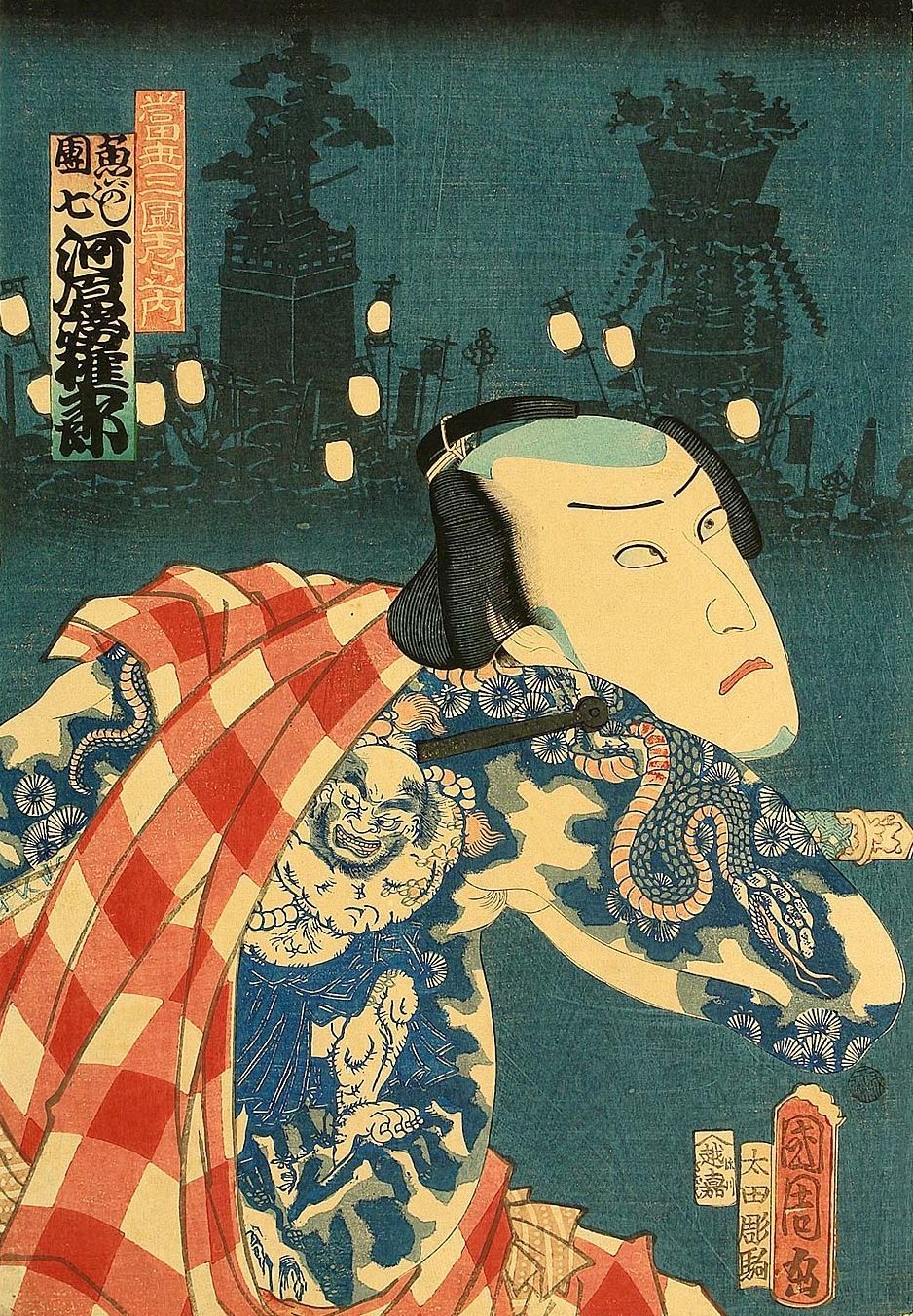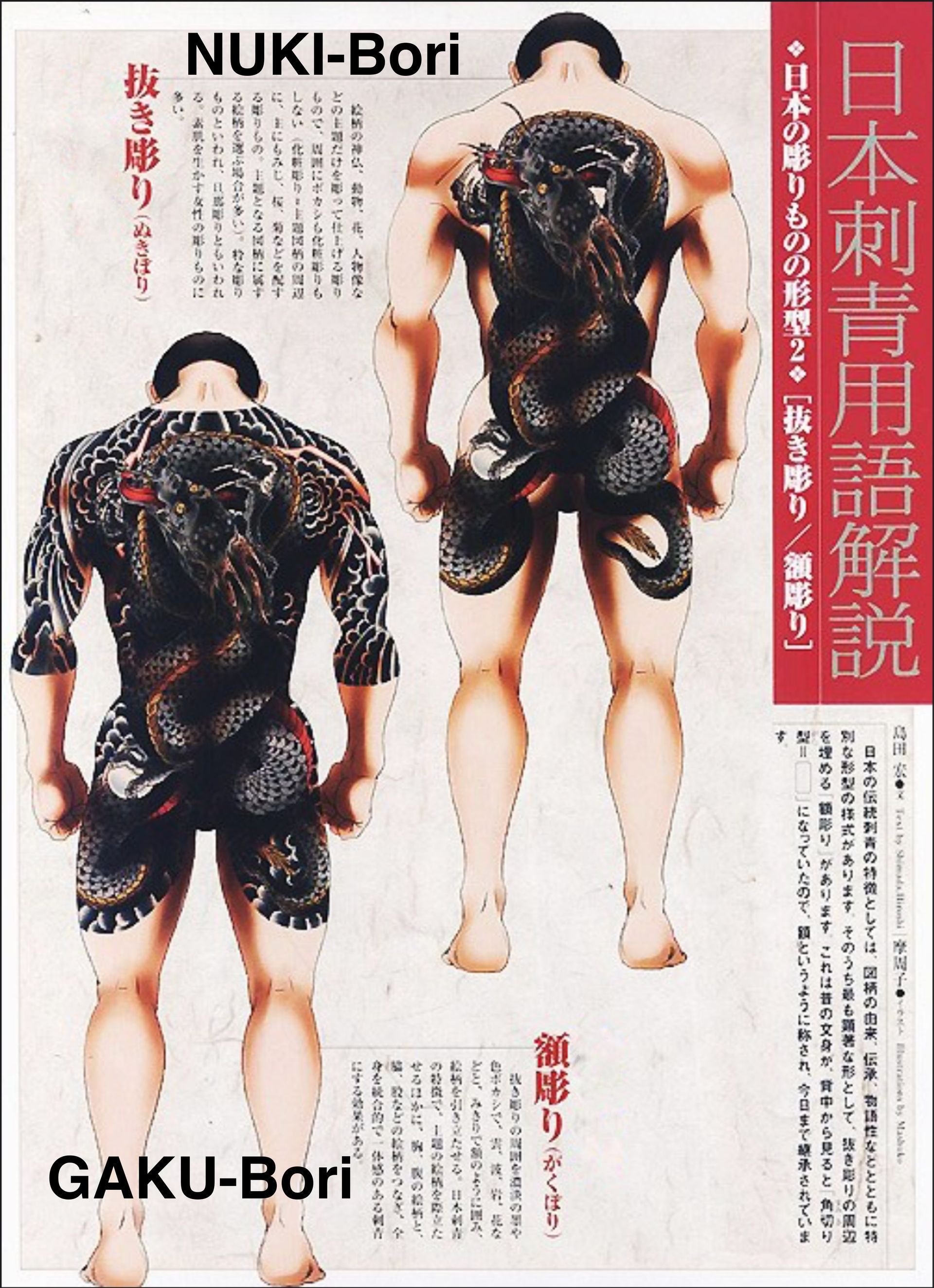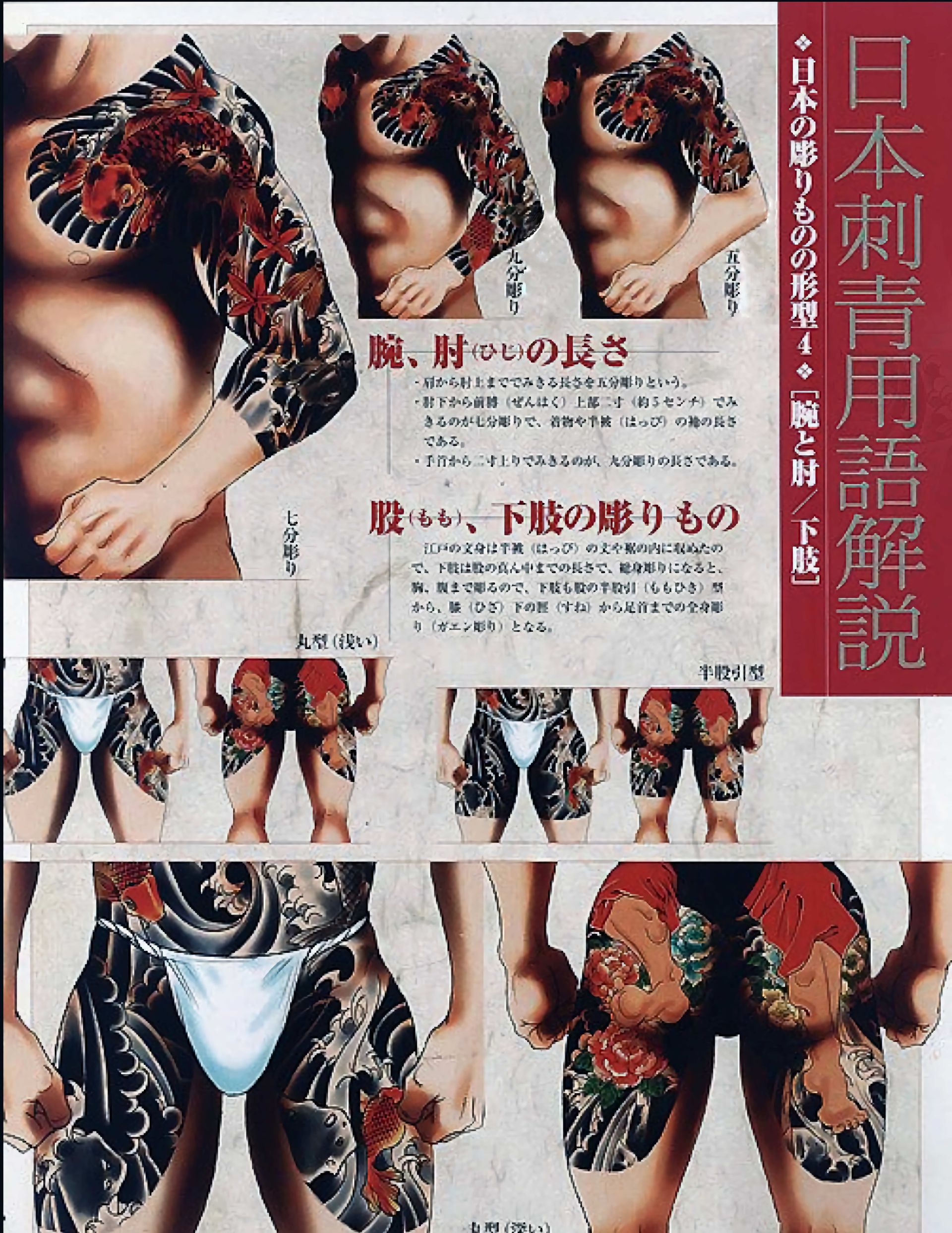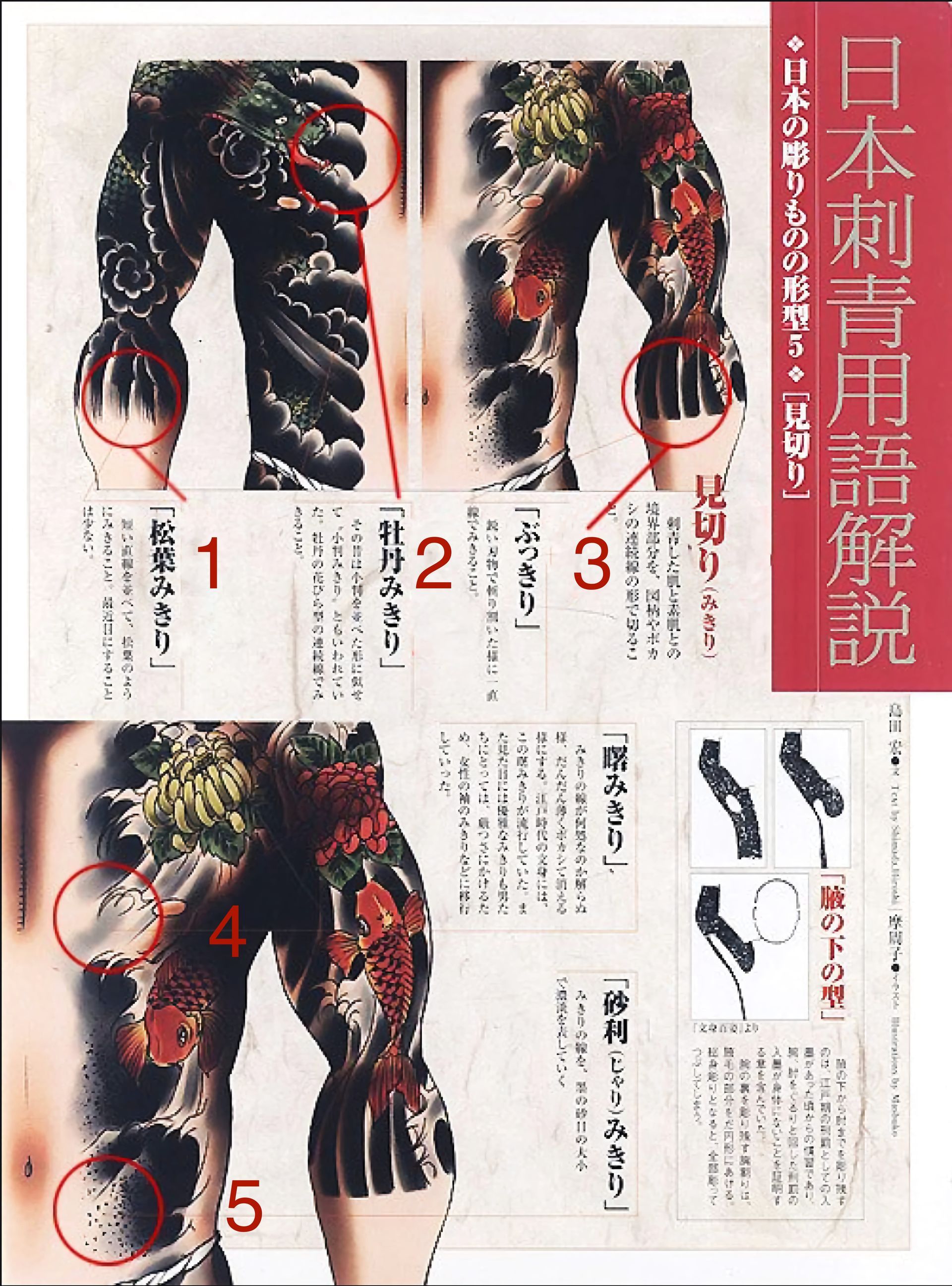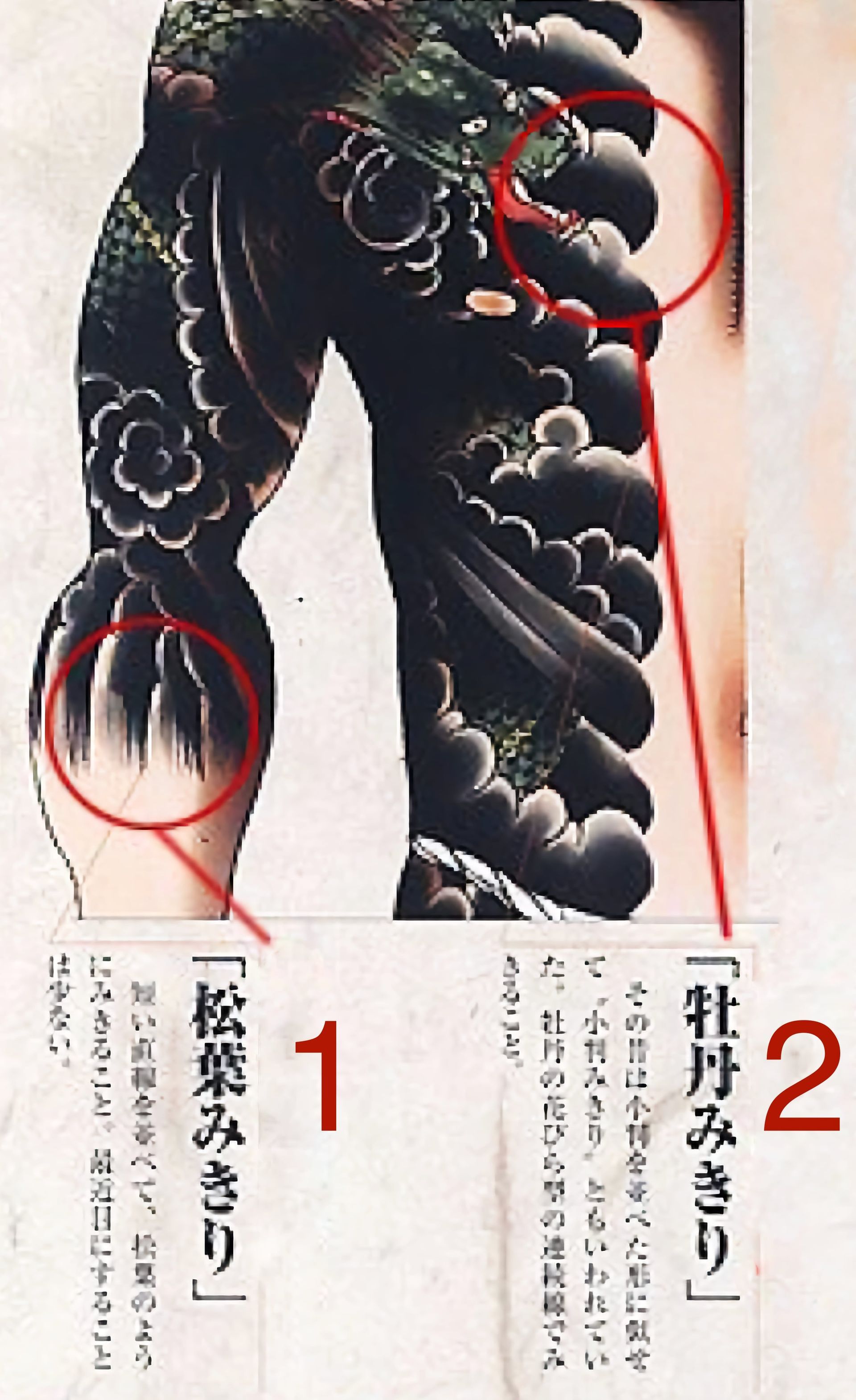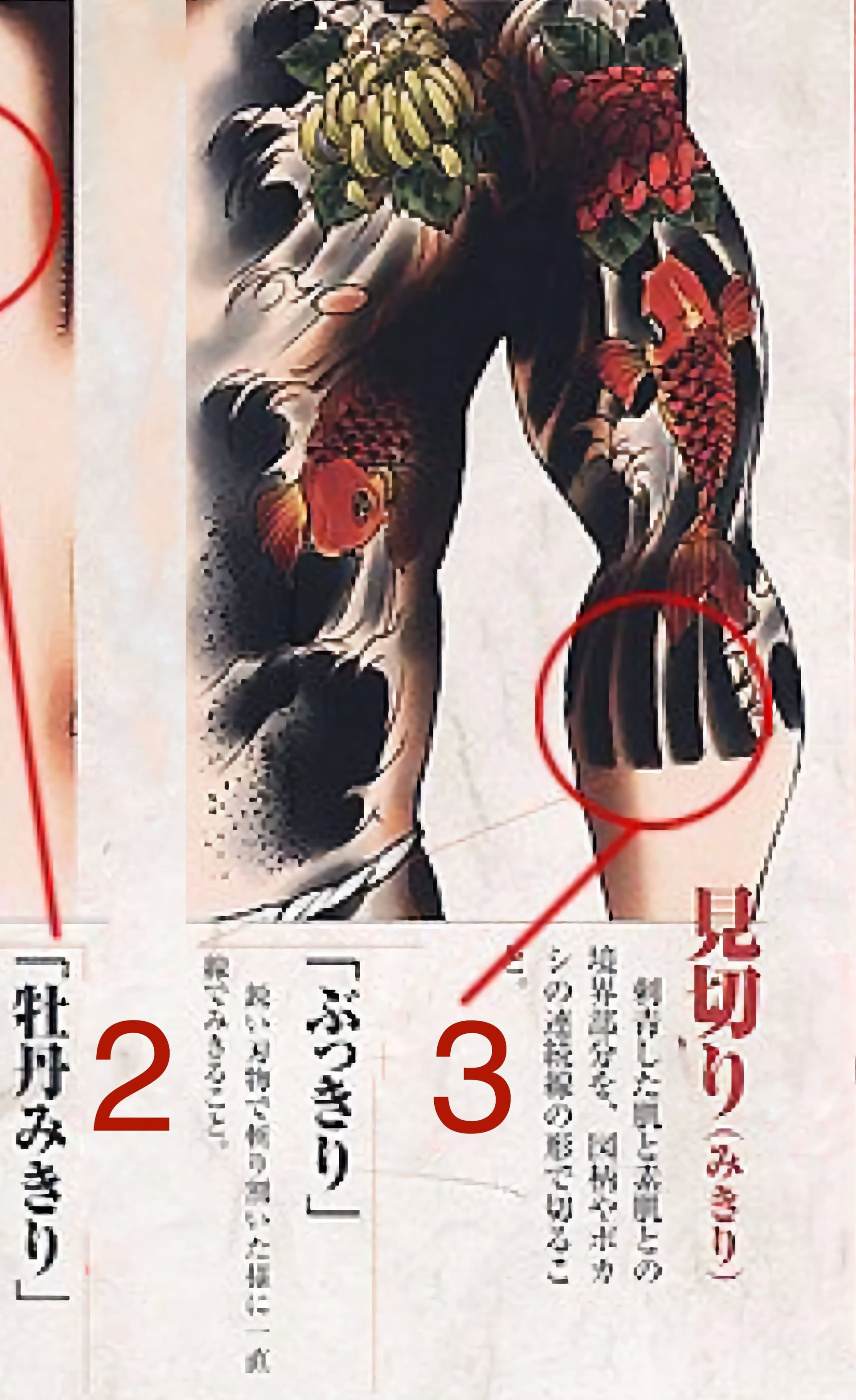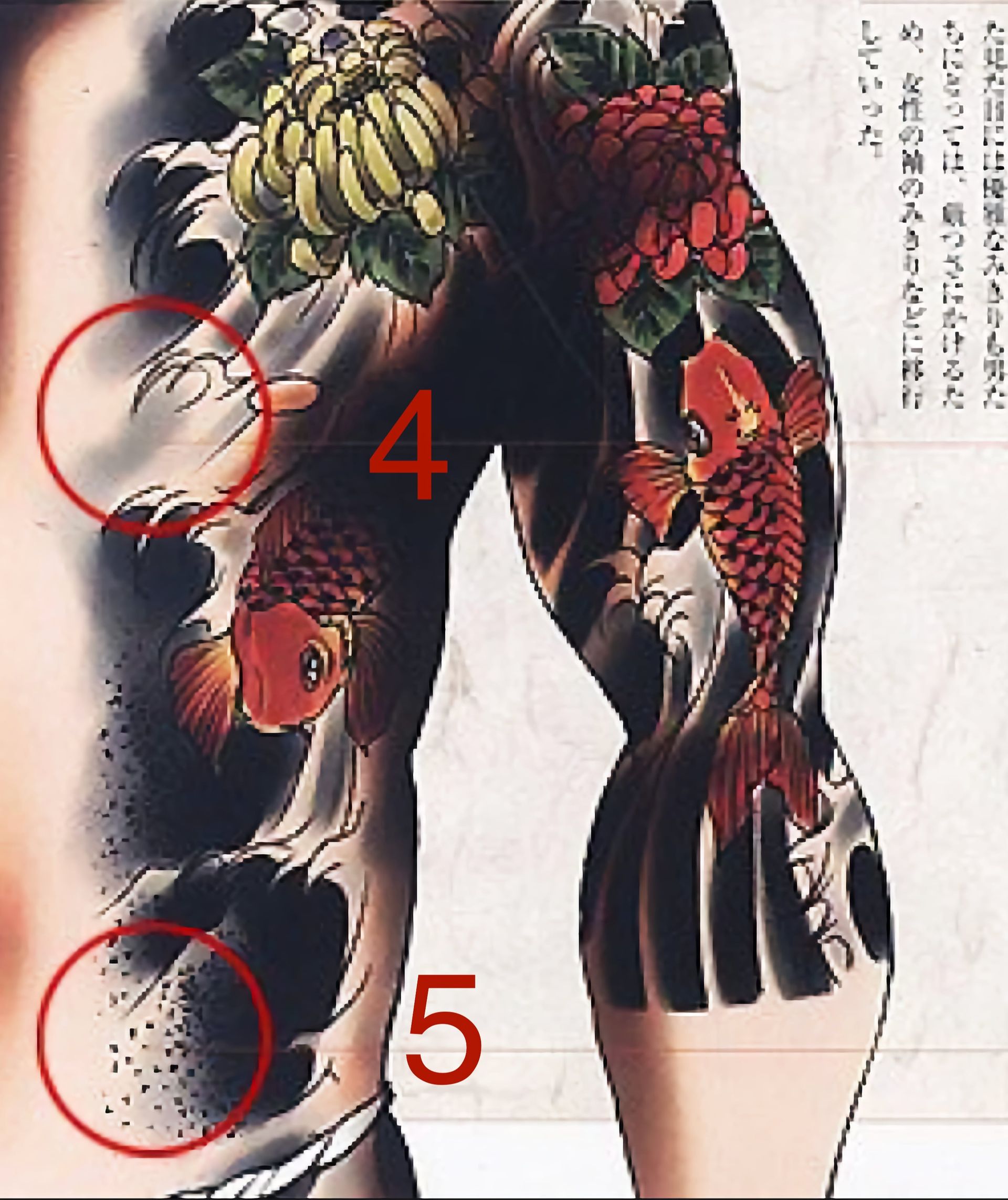Tattoo Style
With our full respect to Japanese tattoo traditions we work only in the style described here.
Though, our style is slightly re-imagined according to modern technical and stylistic aspects
Irezumi
Irezumi, also called Horimono or Wabori, is a traditional Japanese style of tattooing that is created using large scale motifs based on Japanese mythology and religious icons, historical characters and scenes from nature, the elements, and well known Japanese fables. Irezumi is known for its dark and vast backgrounds based on water, wind and clouds that encompasses the entire area around the main motif and fully fills the body part being tattooed, including the whole body except hands, feet, head, face and neck in the case of a proper traditional bodysuit.
History
Irezumi isn’t simply the Japanese word for “tattoos”. Throughout the country’s history different words have referred to tattoos, and the word irezumi itself has been written with different characters, each having a separate meaning or nuance, whether that was the ‘irezumi’ (入れ墨) that was a branding mark, meted out as punishment to criminals, or the ‘irezumi’ (刺青) that was done of free will. Other words have been used, such as ‘irebokuro’ (入れ黒子) which dates from the 1700s. Additional old terms include ‘mon-mon’ ( 紋々), where ‘mon’ refers to a crest, or ‘monshin’ ( 紋身) which literally means a crest on one’s body. These are not used today. The word ‘horimono’ (彫り物), however, still is; it can refer to tattoos or any other engraved thing. More recently, the term ‘wabori’ (和彫り), which means “Japanese engraving” was coined in the 20th century to refer specifically to Japanese tattoos.
Types
There are two different type of Irezumi:
Nukibori and Gakubori.
NUKIBORI – Singular design, without any background.
GAKUBORI –Tattoo design with a background – surrounding patterns which includes secondary elements such as rocks, waves, water or wind-bars, clouds, flowers etc.
Gakubori
The name “Gaku-bori” can be literally translated as ‘framed tattoo’(Gaku 額 is “framed”, Bori 彫り is “tattoo”). Gaku-bori has specific shapes and names depending on a part of the body and always formed by Mikiri – boundary between tattooed skin and bare skin. There are few different types of Mikiri(Akebono Mikiri, Botan Mikiri, etc.) depending on the boundary type. Decision on what exactly type of Mikiri can be used in tattoo project normally made considering the way it could be connected to the new tattoo pieces in future.
The design is used to fill in the background with elements like clouds, waves, wind, and fire. Think of Gakubori as a way tattooers can frame the entire piece, helping to set the stage for the tattoo. In Gakubori, things like clouds and water are obviously not bound by don’t-mix-the-seasons conventions, as they exist year-round.
Nukibori
This refers to the areas that are left untattooed. Skilled tattooists know that the parts of flesh that are not inked are just as important as the parts that are. Untattooed areas can serve as a contrast or even as part of the shading. The use of nukibori is limited only by the tattooist’s creativity; it can appear anywhere within a tattoo. The term is also used in relation to Japanese tattoos that do not have tattooed backgrounds. The untattooed areas, naturally, are the nukibori.
Mikiri
In irezumi, the borders are known as mikiri. Since Japanese tattoos aren’t isolated one-off designs, but large pieces with background that can cover much of the body their edges are a key design element: Irezumi must have mikiri, and they are part of the Work’s initial design conception. There are several styles to choose from, many of which are named after nature motifs. The most comnmon are botan-giri and bukkiri.
-
Mikiri Types
1. MATSUBA MIKIRI
Inspired by pine needles, matsuba mikiri uses series of straight lines to create a border. It’s rarely seen in modern irezumi.
2. BOTAN-GIRI
This wavy mikiri makes its border with a series of shapes that evoke the round petals of a botan (peony). Despite being inspired by the flower, the botan-giri is typically made up of waves and clouds.
3. BUKKIRI (OR BUTSU- GIRI)
This sharply defined mikiri has a straight edge that looks like it was sliced with a katana.
4. AKEBONO MIKIRI
Akebono means “daybreak”, this somewhat ambiguous border gradually becomes less intense in color, just like the rays of the sun.
5. JARI MIKIRI
Literally “gravel border” In this design, the irezumi’s edge gradually fades out with a series of small dots.
Irezumi patterns
Traditionally, Irezumi is based on a full body concept that is built in sections.
F.A.Q.
-
What is IREZUMI?
Irezumi is a traditional Japanese style of tattooing that is created using large scale motifs based on Japanese mythology and scenes from nature. Irezumi is known for its dark and vast backgrounds based on water, wind and clouds that encompasses the entire area around the main motif and fills the body part being tattooed, including the whole body except hands, feet, head, face and neck in the case of a proper traditional bodysuit.
Japanese tattoo(Irezumi)- one of the most popular style in modern tattooing. Being looking quite illustrative, it’s traditionally deeply symbolical. Every element of Japanese tattoo design has it’s particular meaning and purpose. In order to understand the design meaning, it is essential to understand the history and background of Japanese culture itself. Here is some interesting article regarding Irezumi Symbology
-
What is 'Irezumi Pattern'?
In traditional Irezumi, the tattoo design is based on a full-body concept. It is created in sections that correspond to different body parts. Each section has its own unique pattern that can be appreciated individually, but also fits together with the surrounding sections.
-
Can I get a small tattoo done in Irezumi style?
Technically yes, and this is called ‘one point tattoo’. In our studio we specialize in Gakubori – framed tattoo and do ONLY large scaled tattoos which take entire body part and naturally framed by that part of the body.
-
I'd like to get tattooed in Irezumi style, how can I get a consultation appointment?
It’s really easy to get your consultation, please learn the process and follow few simple steps.


